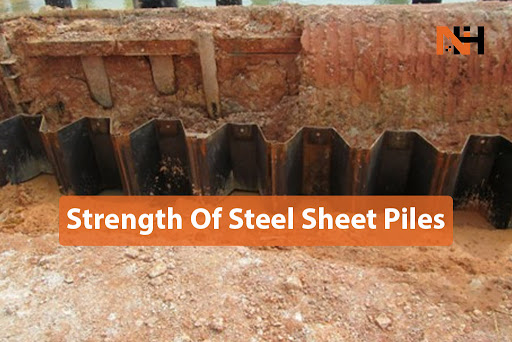
◈ Steel Sheet Piles: A Cornerstone of Modern Construction
In the world of construction, the choice of materials can make all the difference between a successful project and a costly failure. Steel sheet piles, while not always in the limelight, have emerged as a versatile and indispensable construction material. These interlocking steel sheets have revolutionized the way engineers tackle a wide array of projects, from bridges and wharves to retaining walls and underground structures. In this article, we will explore the various aspects of steel sheet piles, their benefits, and how they have become a cornerstone of modern construction.
Understanding Steel Sheet Piles
Steel sheet piles are long, vertical sections of
steel with a variety of shapes and sizes. They are designed to interlock with
one another to create a continuous wall, often used for retaining earth, water,
or other bulk materials. Steel sheet piles are typically made from hot-rolled
steel, which is known for its strength and durability. These piles can be
temporary or permanent, depending on the construction project's requirements.
Types of Steel Sheet Piles
Steel sheet piles come in several types, including:
1. Z-Type Sheet Piles: These are the most common and versatile type of sheet piles, featuring a single, deep pocket on one side and a shallow, flat surface on the other, forming a Z shape.
2. U-Type Sheet Piles:
U-shaped piles are widely used for their stability and ease of installation.
They have a shape similar to that of Z-type piles but with a more symmetrical
profile.
3. Straight Web Sheet
Piles: These are relatively simple sheet piles with a straight, flat front and
back, making them suitable for simpler applications.
4. H-Piles: These are
larger and heavier than other types and are used for exceptionally demanding
projects, such as large marine structures and high retaining walls.
The Benefits of Steel Sheet Piles
Steel sheet piles offer a myriad of advantages
that make them a preferred choice in construction:
1. Strength and Durability
Steel is inherently strong and resistant to many environmental factors, including corrosion. This strength and durability allow steel sheet piles to withstand the harshest conditions, making them ideal for projects that require long-lasting structures.
2. Versatility
One of the most significant benefits of steel sheet piles is their versatility. They can be used in various applications, such as cofferdams, bulkheads, retaining walls, and even as temporary shoring. Their adaptability is a key factor in their popularity.
3. Speed and Efficiency
Installation of steel sheet piles is relatively quick and straightforward. Their interlocking design ensures a tight, stable wall, saving time and labor costs. This efficiency can be a game-changer, especially in projects with tight schedules.
4. Cost-Effectiveness
While steel sheet piles may have a higher initial cost compared to alternative materials, their longevity and low maintenance requirements make them cost-effective in the long run. The reduced need for repairs and replacements can lead to substantial savings over time.
5. Environmental Friendliness
Steel is highly recyclable, making it an environmentally friendly choice. When steel sheet piles are no longer needed, they can be recycled, reducing the overall environmental impact of a construction project.
6. Aesthetic Options
Steel sheet piles are available in a variety of shapes, sizes, and finishes, allowing for customization to meet both structural and aesthetic needs. This flexibility is crucial for projects that require both functionality and visual appeal.
Applications of Steel Sheet Piles
Steel sheet piles are used in a wide range of
construction projects, including:
1. Retaining Walls: Steel sheet
piles are commonly used to create retaining walls in areas with limited
space or to prevent soil erosion.
2. Wharves and Docks: They
are employed in the construction of wharves and docks to support waterfront
structures and control water levels.
3. Flood Protection: Steel
sheet piles are vital in building flood protection barriers to shield low-lying
areas from flooding.
4. Underground Structures:
They are used to create cut-off walls in underground construction projects,
such as tunnels and underground parking garages.
5. Bridge Abutments: Steel
sheet piles can be used to construct abutments for bridges and other
infrastructure projects.
6. Cofferdams: They are
often used in the construction of cofferdams to create dry work areas in waterlogged
locations.
Conclusion
Steel sheet piles have undoubtedly revolutionized the construction industry with their strength, versatility, and cost-effectiveness. They have become a cornerstone of modern construction, enabling engineers and architects to undertake ambitious projects that were once thought unfeasible. Whether it's retaining walls, flood protection, or creating stable foundations, steel sheet piles continue to play a pivotal role in shaping the infrastructure of our world. Their benefits make them a go-to solution for a wide array of construction challenges, and they are likely to remain a fundamental material in the construction industry for years to come.
For more information on steel sheet piles and their applications, you can explore resources provided by reputable organizations like the American Institute of Steel Construction (AISC), or refer to industry-specific publications for in-depth insights into this remarkable construction material.
